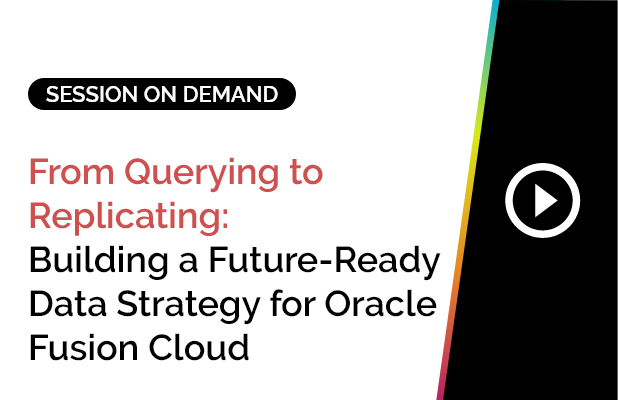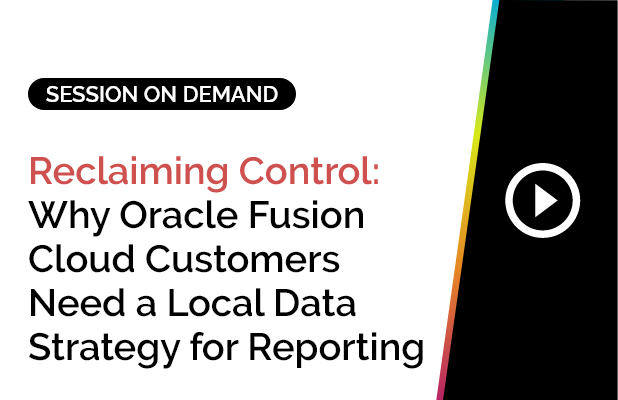Data is the currency of the modern enterprise. Organizations involved in ‘the great data rush’ know that the ability to make business sense of data is the difference between success and failure. This is especially critical in financial reporting to help business users make better fiscal decisions. However, sorting through data and transforming it into actionable intelligence requires expertise.
Fortunately, technology partners offer tools that help visualize data obtained from multiple applications and make sense of the treasure trove of information to power business decisions and drive operational efficiency. Often referred to as ‘data drilldown, a unique feature in financial accounting tools now helps business users examine the granular details of sales revenue, production numbers, operating expenses, and other details. With simple analysis techniques, this feature can explore trends and insights that give business leaders a 360-degree view into their fiscal strengths and areas of improvement.
The demand for data drilldown in financial accounting
When it comes to financial reporting tools, reviewing information from different entities is the biggest challenge. The need for granular visibility into company accounts and financial health leads organizations to opt for tools that delve into datasets based on specific metrics.
Organizations can view reports in tremendous detail by dividing data hierarchies into sub-levels and enabling the exploration of each level. Data drilldown tools can pinpoint the source of every financial figure without hunting through several spreadsheets or waiting on technical departments for clarification.
For years, business users have been waiting for tools to compare general ledger balances and deeper details such as balance details, journal details, and sub-ledger details.
How drilldown tools really work
The acceptance of data drilldown as a critical Business Intelligence (BI) feature is seen as one of the biggest enablers in financial accounting and often beyond. The technique provides interactive data visualization through reports, charts, and spreadsheets, helping business users spot stories and trends quickly.
For instance, finance and accounting leaders can analyze what’s driving increased revenue in a particular region, or time period, using the drilldown feature. They effectively ‘drill down’ to get a micro view of the data available to them. Without such capabilities, finance and accounting leaders would have to speak to accounting, finance, sales, and other teams to understand the trends. In the business world, this directly translates to added complexity and reduced transparency.
Drilldown tools give these leaders the real-time ability to access sales reports and view revenue based on different parameters.
The ability to deep dive into data enables managers to understand the root cause behind specific events. By viewing data in interactive formats, managers can apply their experience and intuition to answer the underlying query.
Drilldowns have many benefits, but something’s still amiss
Understanding the concept of drilldown is not tricky as it exists everywhere in the computing world. Folders and files on computers follow the same idea, as do the menu and sub-menu options on websites. Modern users drilldown through data every day. Here’s how drilldown tools benefit business users.
- Investigate large transactions – End users can drilldown the details of large transactions to investigate how company money was spent. This is especially useful for large organizations to analyze and factually check expense reports. It offers visibility into transactions made by all users and empowers organizations with complete transparency into expenses and income.
- Study departmental performance – As each department creates and runs its own reports, drilldown features allow them to explore metrics. BI tools with drilldown capabilities can help departments understand their expenses and ROI in granular detail.
- Provide self-service – Business users appreciate drilldown capabilities as they provide self-service. This allows users to add and view comments so that there is less dependence on other teams and can make quick decisions and operate more efficiently.
- Share actionable insights – The extent of actionable insight that drilldown tools provide depends on how deep a user wishes to search. If handled right, these tools can answer questions about which products sell best, which salespeople perform best, which regions perform best, and which business units bring in the maximum ROI on their costs. The possibilities are endless.
- Empower non-tech users – Drilldown tools can showcase information in layers, reducing server query times. This reduces the load placed on servers for fetching data, ultimately improving IT performance.
- Improve server performance – Drilldown tools can showcase information in layers, thereby reducing server query times. This reduces the immense load placed on servers for fetching data, which ultimately results in improved IT performance.
Business users find that the quicker they can get answers to their queries, the faster they can move on to other tasks. Drilldown tools speed up information discovery, boosting productivity, revenue, and decision-making.
While the market does have several tools that deliver drilldown capabilities, some elements must come together for a holistic offering. Many solutions provide this capability but fail to deliver intuitive design for users. Most drilldown capabilities come in the web module or a form design. But SplashGL delivers drilldown in a spreadsheet design to incorporate greater intuitiveness, and self-service reporting. When users don’t depend on IT teams for every drilldown requirement, technical experts can focus on strategic, value-added tasks. Everyone wins.
How SplashGL drilldown bridges the user experience gap
We designed SplashGL’s drilldown capability keeping in mind the feedback we had from customers in terms of what the current tools in the market are missing in terms of functionality and ease of use.
SplashGL is equipped with drilldown functions designed to extract precise information from underlying datasets. Every user query is given equal importance to offer dynamic drilldowns that address multiple queries.
From a design perspective, we have simplified SplashGL’s drilldown capability to the extent that it appears in Microsoft Excel as a simple add-in that connects to Oracle EBS and Cloud. Frozen column names make it easy to scroll through rows, and the columns are equipped with filters to sift through and find the most critical insights quickly.
Meanwhile, sub-ledger data is stored in one worksheet and grouped by source, including manual adjustment, so users can easily reconcile to general ledger balance when needed. In addition, SplashGL enables a one-click drill from the general ledger balance to the sub-ledger, a feature that many organizations had been looking for. Users are further equipped to modify each drilldown as and when needed. Our numbers show that this capability saves person-hours and significant research time.
Summing up
As organizations scale, the complexity of their financial data increases exponentially. But with well-designed and intuitive drilldown capabilities, organizations can simplify financial reviews and empower their workforce to make the best fiscal decisions – every single day.














